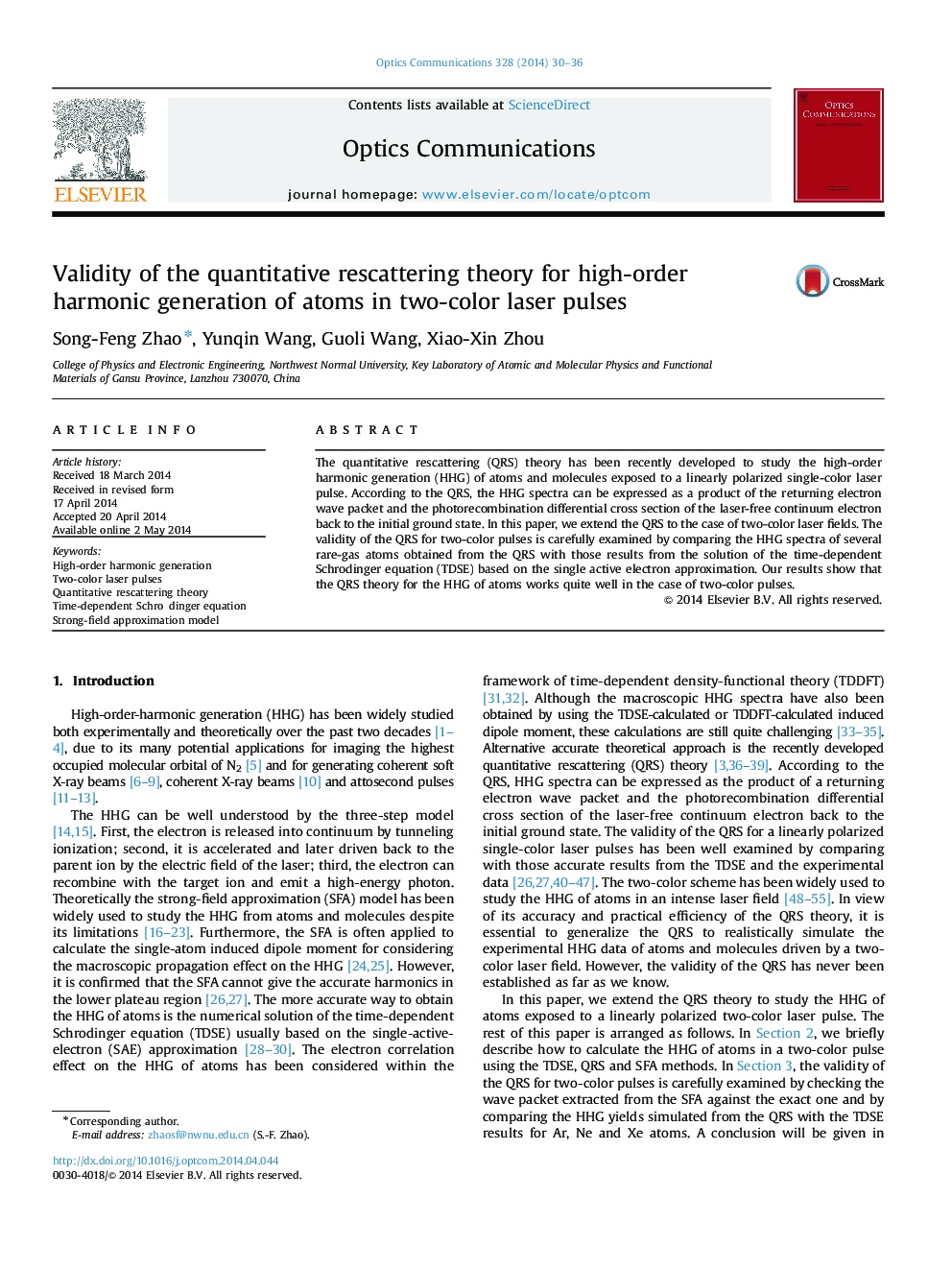| Article ID | Journal | Published Year | Pages | File Type |
|---|---|---|---|---|
| 1534568 | Optics Communications | 2014 | 7 Pages |
Abstract
The quantitative rescattering (QRS) theory has been recently developed to study the high-order harmonic generation (HHG) of atoms and molecules exposed to a linearly polarized single-color laser pulse. According to the QRS, the HHG spectra can be expressed as a product of the returning electron wave packet and the photorecombination differential cross section of the laser-free continuum electron back to the initial ground state. In this paper, we extend the QRS to the case of two-color laser fields. The validity of the QRS for two-color pulses is carefully examined by comparing the HHG spectra of several rare-gas atoms obtained from the QRS with those results from the solution of the time-dependent Schrödinger equation (TDSE) based on the single active electron approximation. Our results show that the QRS theory for the HHG of atoms works quite well in the case of two-color pulses.
Related Topics
Physical Sciences and Engineering
Materials Science
Electronic, Optical and Magnetic Materials
Authors
Song-Feng Zhao, Yunqin Wang, Guoli Wang, Xiao-Xin Zhou,
